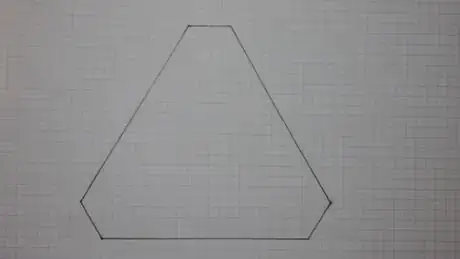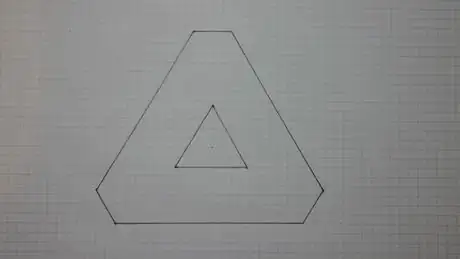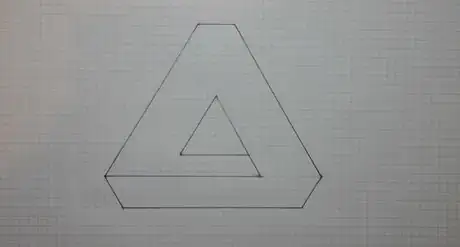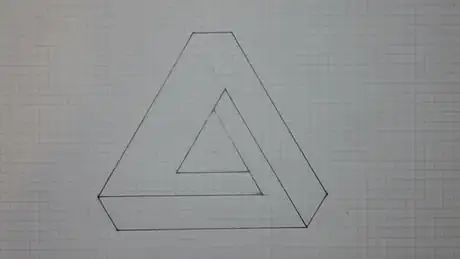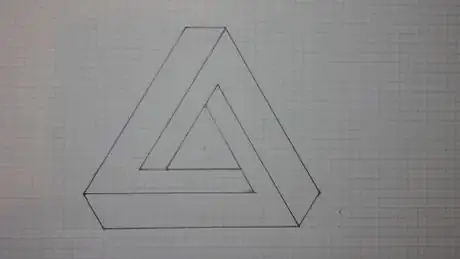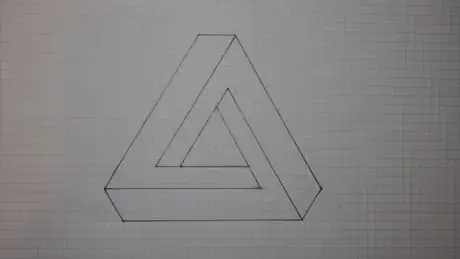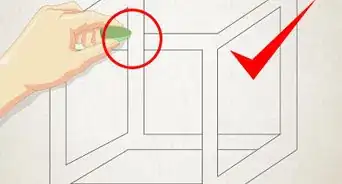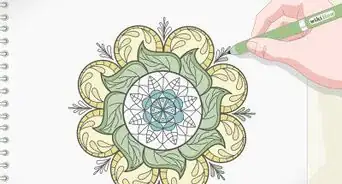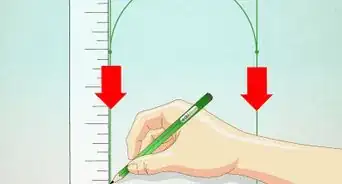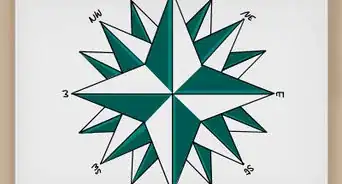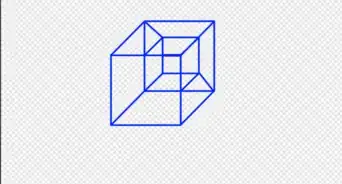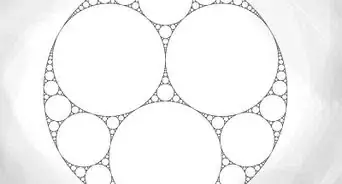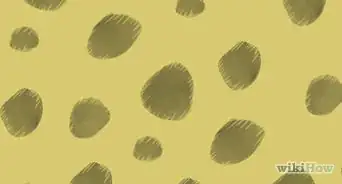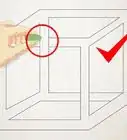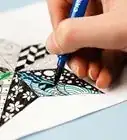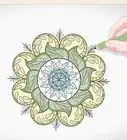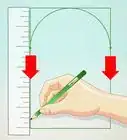wikiHow is a “wiki,” similar to Wikipedia, which means that many of our articles are co-written by multiple authors. To create this article, 90 people, some anonymous, worked to edit and improve it over time.
wikiHow marks an article as reader-approved once it receives enough positive feedback. This article has 20 testimonials from our readers, earning it our reader-approved status.
This article has been viewed 876,295 times.
Learn more...
The "rule of three", where arrangements of triplets have a pleasing effect on the eye, makes this triangle an intriguing shape to ponder and to create. It appears frequently in the art of MC Escher. It is also known as a Penrose triangle or Penrose tribar.
Steps
Starting with an Inverted Triangle
-
1Sketch an inverted equilateral triangle. This will be the center of your triangle.
-
2Lightly sketch two parallel lines outside one side of the triangle. The lines should be equally spaced. Take caution that your lines are drawn straight.Advertisement
-
3Repeat this for each of the other two sides. Your sketch should look like three triangles nested together.
-
4Choose one side of the "center" triangle. Extend one end of that straight line until it reaches the "middle" triangle.
-
5Find the same side of the "middle" triangle. Extend one end of that straight line, in the same direction as before, until it reaches the "outside" triangle.
-
6Repeat steps for the other two sides of the triangle.
-
7Erase short segments so that the triangle begins to look three-dimensional rather than flat. Each edge of this "3-D" shape should look like a reverse "L".
-
8Add short segments at an angle in the corners. These short segments will finish off the outside points.
-
9Cleanup your drawing by erasing the points outside of the short segments drawn in the previous step.
-
10Add shading if desired.
Extending a Triangle
Starting from an Irregular Hexagon
-
1Draw a hexagon. Three sides should be long and three short, alternating short and long sides. This can easily be done by constructing an equilateral triangle and "chopping" off the corners.
-
2Put a smaller, equilateral triangle in the middle of the hexagon.
-
3Draw a line from a corner of the triangle to a corner of the hexagon, as seen in the above picture.
-
4Repeat this process for the other two sides.
-
5Finished. Shade or colour if desired.
Community Q&A
-
QuestionWho made the triangle?
 Community AnswerThe Penrose triangle, also known as the Penrose tribar, or the impossible triangle, was first created by the Swedish artist Oscar Reutersvärd in 1934.
Community AnswerThe Penrose triangle, also known as the Penrose tribar, or the impossible triangle, was first created by the Swedish artist Oscar Reutersvärd in 1934. -
QuestionWhat other things is Oscar Reutersvard famous for?
 Community AnswerOscar Reutersvard is famous for inventing 'impossible figures', which are 3D objects that cannot be feasibly constructed.
Community AnswerOscar Reutersvard is famous for inventing 'impossible figures', which are 3D objects that cannot be feasibly constructed. -
QuestionIs this type of optical illusion found in other shapes as well?
 Community AnswerYes, optical illusions like this have been done with all kinds of shapes.
Community AnswerYes, optical illusions like this have been done with all kinds of shapes.
About This Article
Draw an impossible triangle by drawing an equilateral triangle and chopping off its corners. This will leave you with a hexagon with three long, and three short sides. Draw a smaller equilateral triangle in the middle of that hexagon. Then draw a line from one corner of the hexagon until it just passes the small triangle. Extend one side of that triangle to meet the other line and repeat for the other two sides. When you are done, it should look like there are three L’s fitted together to form a 3D triangle with a triangular hole in the middle. If you want to learn how to start your drawing with an inverted triangle, keep reading the article!
